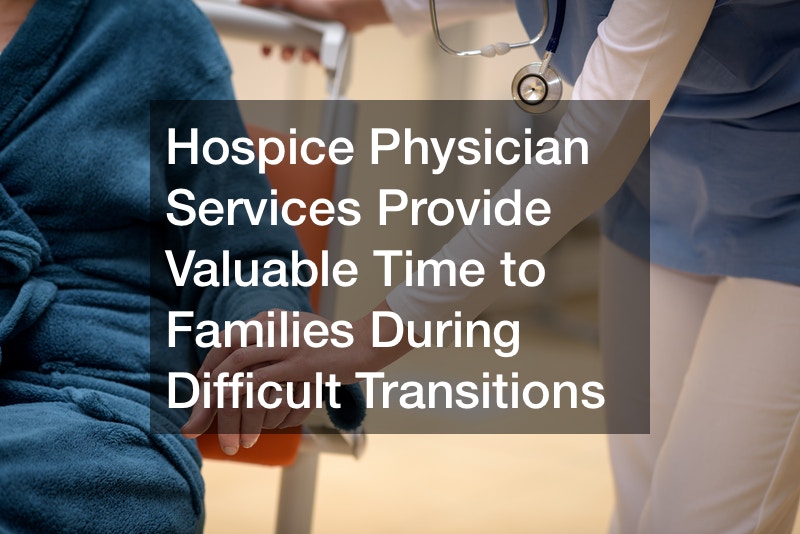
The human body is prone to different illnesses, conditions, and diseases. Some can be treated, but others are terminal, meaning their final result is death. Whatever the case, getting sick can be a harrowing experience, regardless of the condition’s severity. You need to understand some of the best ways to get appropriate care to help you have an easy time until your recovery or unfortunate demise. One of the critical subjects you should understand is doing all that is possible to learn more about hospice services. There are many questions about this phenomenon, including is hospice good? Different hospice institutions offer varying services, depending on what the management prefers and the care they are adequately equipped to handle.
If you or your loved one suffers from a disease that can be healed, it would be appropriate to consider getting admitted to a hospice and respite care facility. You will get all the necessary attention to help boost recovery and get back home healthy. On the flip side, people with terminal illnesses, such as cancer, are advised to check out palliative care institutions. You may consider working with a hospice and palliative care foundation that may be better positioned to offer the necessary financial support. Most of the facilities provide adult palliative care, considering that part of the population is mainly affected by terminal diseases.
There is a saying that death and taxes never change.
Today’s reality, however, is that both of these are changing as the nation adjusts to the implications of the Covid-19 pandemic. And while there are few companioning about the fact that for this once in this lifetime everyone has been given a pass on paying taxes on time, there are many people who find themselves fearing the loneliness of dying alone. In fact, at a time when most hospitals are not allowing any visitors as they try to contain the spread of a dangerous disease, there is an even more important role for hospice care services to play. As a platform of caring individuals and practices that help east the final transitions that patients and family members make at the end of life, hospice care services remain an important resource for families.
The statistics show that women who are 50 years and older in age are often the primary caregiver, during many end of life transitions, but the fact remains that the patient themselves are often acutely aware of what is to come early on in the process. Adult living facilities, doctors, physicians, and other related health professionals have long known that these caregivers and other family members can be well served by hospice care services.
Hospice Physician Services Provide Valuable Time to Families During Difficult Transitions
Even before the threat and arrival of the Covid-19 pandemic, it was estimated that as many as 20% of the U.S. population would be over 65 by the year 2030. As families hear the news about the limitations on hospital visitor policies, however, the fear of being able to remain by the side of a dying family member may be all too real. For this reason, the importance of the practices put into place by hospice care services are invaluable. A practice and a platform that many people do not even know about until the face end of life decisions for a spouse of a loved one, hospice care is nothing new. In fact, helping loved ones who are friends or family members have an easier end of life is at the root of the cultural history of many parts of the world.

The history of hospice, in fact, dates back to the 11th century, when a religious order of monks established hospitals along a pilgrimage road leading to Jerusalem. More recently, of course, Senators Frank Church and Frank E. Moss introduced the first hospice legislation in the U.S. to provide funding for these programs in 1974. Consider some of these other important facts about the hospice care network that enables many friends and family members to create the best possible setting for their loved ones:
- By definition, hospice typically starts after a formal referral has been made. Following the referral, a hospice representative will then visit the patient within 48 hours and begin the process of establishing communication and putting plans in place with the necessary supports that are needed.
- It may come as no surprise that the most recent data from the National Hospice and Palliative Care Organization (NHPCO) indicates that a mere 5.4% of hospice patients in the year 2015 were under the age of 65.
- Although numbers can vary from one year to the next, there were approximately 1.38 million Medicare beneficiaries who were enrolled in Hospice for 24 hours or more in the year 2015 alone.
- As more and more family members become aware of the available hospice services, the number of hospice patients grew from 513,000 in the year 2000 to nearly 1.4 million by the year 2015.
- Because hospice staff members are on call 24 hours a day and seven days a week, this program provides family members and beloved friends an around the clock valuable resource during the most challenging transition anyone ever faces.
Today’s challenges that are associated with the Covid-19 pandemic are frightening, but there is some comfort to be found that the network of hospice care providers has practices in place that can help families make a plan for the realities that many are facing. Will you be ready?

